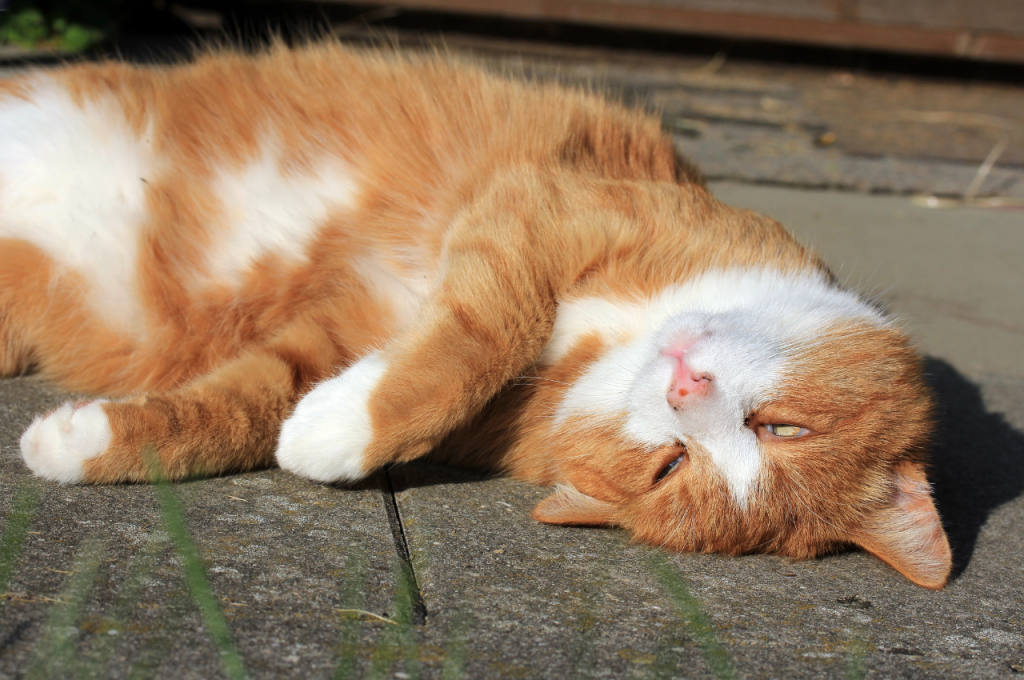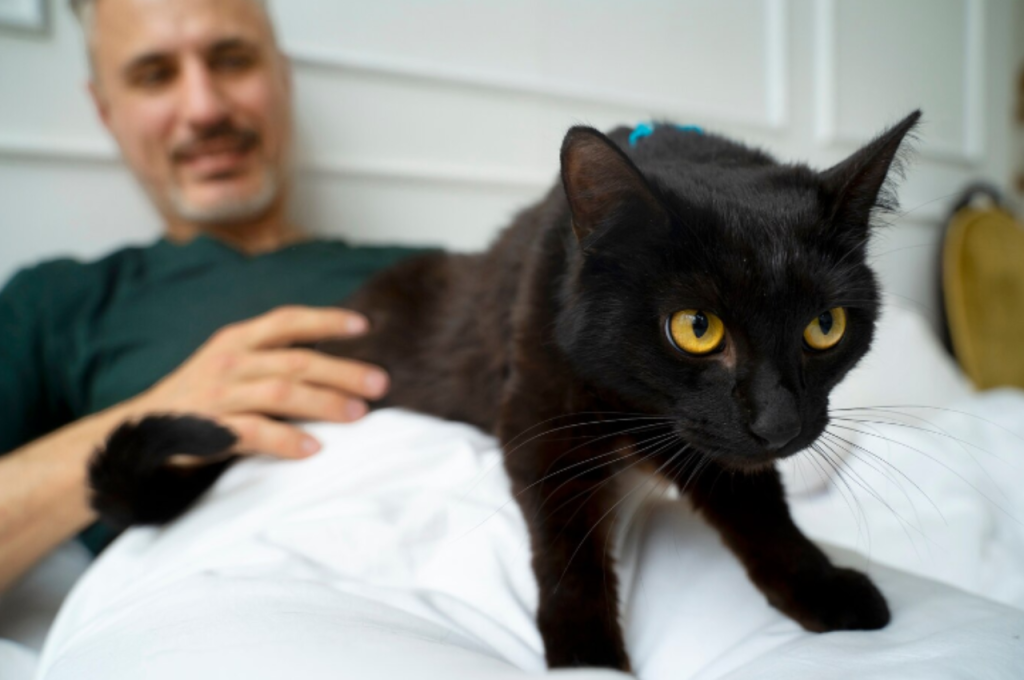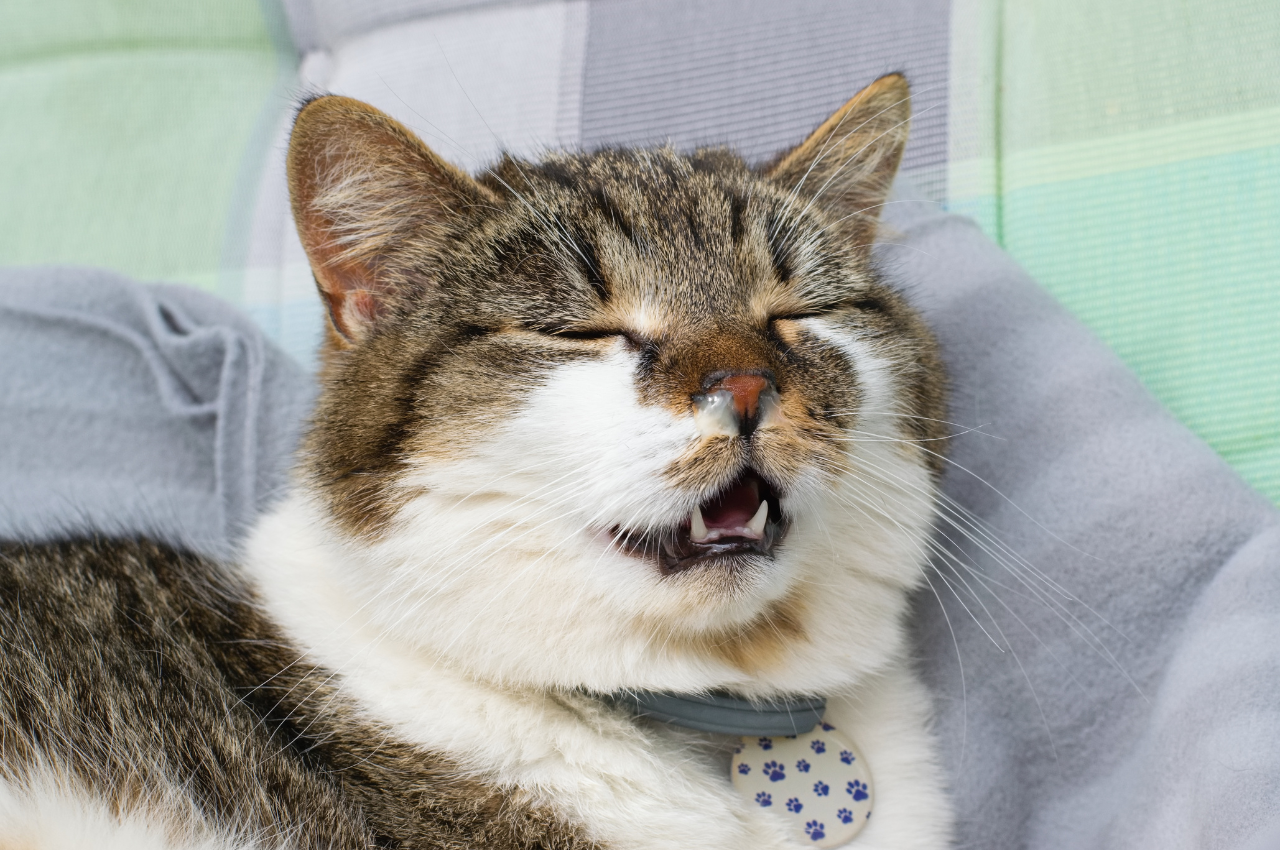Traumatized cat symptoms include hiding, aggression, and changes in appetite and behavior. These signs may indicate stress or anxiety in cats, requiring prompt attention and care.
Understanding these symptoms can help cat owners provide the necessary support and treatment to help their feline companions overcome their trauma. Cats are sensitive animals that can experience trauma from various sources, such as loud noises, changes in their environment, or past negative experiences.
Recognizing the signs of a traumatized cat is crucial for their well-being and can lead to a quicker recovery. By being observant and proactive, cat owners can create a safe and comforting space for their pets to heal and thrive.
Recognizing Trauma In Cats
Recognizing trauma in cats is crucial. Watch for traumatized cat symptoms like hiding, aggression, or excessive grooming. Understanding these signs can help provide the necessary support and care for your feline companion.

Cats are known to be resilient animals, but they can also experience trauma like humans do. Trauma can be caused by various factors such as abuse, accidents, or even a change in environment. It’s important to recognize the symptoms of trauma in cats to provide them with the appropriate care and support they need to recover. In this article, we will focus on the physical and behavioral symptoms of traumatized cats.
Physical Symptoms
Physical symptoms are the easiest to recognize. Traumatized cats may exhibit the following physical symptoms:
- Loss of appetite
- Weight loss or gain
- Fur loss or excessive grooming
- Agitation or restlessness
- Changes in sleeping patterns
- Increased heart rate or breathing
- Visible injuries or wounds
If you notice any of these physical symptoms in your cat, it’s important to take them to a veterinarian to rule out any underlying medical conditions and to provide appropriate treatment.
Behavioral Changes
Trauma can also manifest in behavioral changes in cats. These changes can be subtle or drastic, and may include:
- Aggression or fearfulness
- Withdrawal or hiding
- Excessive vocalization
- Loss of interest in play or socialization
- Unusual litter box behavior
- Hyper-vigilance or hyperventilation
It’s important to note that these behavioral changes may also be indicative of other underlying medical conditions. Therefore, it’s important to take your cat to a veterinarian for a thorough examination. In conclusion, recognizing trauma in cats is crucial to their well-being. By paying attention to their physical and behavioral symptoms, we can provide them with the appropriate care and support they need to recover from their trauma.
Common Causes Of Trauma
Accidents And Injuries
Accidents and injuries are common causes of trauma in cats. These can include being hit by a car, falling from a height, or sustaining injuries from fights with other animals. It’s important to keep a close eye on cats, especially those who have outdoor access, to prevent accidents and injuries.
Abuse And Neglect
Abuse and neglect can lead to severe trauma in cats. This can involve physical abuse, such as beating or kicking, as well as emotional neglect, such as lack of social interaction or inadequate care. It’s crucial to create a safe and nurturing environment for cats to prevent the devastating effects of abuse and neglect.
Behavioral Symptoms Of Trauma
When a cat experiences trauma, it can exhibit various behavioral symptoms that may indicate distress or unease. Understanding these behavioral signs is crucial for providing the necessary support and care for a traumatized feline. By recognizing these symptoms, pet owners can take proactive measures to help their cats recover and feel safe again.
Increased Aggression
Traumatized cats may display increased aggression as a result of their distress. This can manifest as hissing, growling, or even biting when they feel threatened or frightened. Understanding the source of their aggression is vital for providing a calm and secure environment to help them feel safe again.
Withdrawal And Hiding
Another common behavioral symptom of trauma in cats is withdrawal and hiding. A traumatized cat may seek seclusion, retreating to secluded areas of the home or avoiding interaction with people or other pets. This behavior is a clear indication of their distress and the need for a gentle, patient approach to help them feel comfortable and secure.
Physical Signs Your Cat May Be Traumatized
Look out for physical signs of a traumatized cat, such as excessive grooming, hiding, or changes in appetite. Aggressive behavior, dilated pupils, and over-vocalization can also indicate a distressed feline. These symptoms call for gentle and patient care to help your cat recover.

Change In Eating Habits
A traumatized cat may exhibit physical signs that indicate something is amiss. One of the key indicators is a change in eating habits. Cats are known for their love of food, so any deviation from their normal behavior can be a cause for concern. It’s important to pay attention to any sudden decrease or increase in appetite, as well as any refusal to eat altogether. Some common changes in eating habits to look out for include:
- Loss of appetite
- Excessive eating or binge eating
- Avoiding certain types of food
- Refusing to eat altogether
If you notice any of these changes, it’s crucial to consult with your veterinarian to rule out any underlying medical conditions and address the potential trauma your cat may be experiencing.
Unexplained Injuries
Another physical sign that your cat may be traumatized is the presence of unexplained injuries. Cats are naturally agile and careful creatures, so any wounds or injuries that cannot be attributed to accidents or typical play should be taken seriously. These injuries may manifest as scratches, bite marks, or bruises on their body. Some possible causes of unexplained injuries in traumatized cats include:
- Conflict with other animals
- Physical altercations with humans
- Self-harm due to anxiety or stress
It’s important to carefully examine your cat’s body and seek veterinary attention if you discover any unexplained injuries. Treating these wounds is crucial, but addressing the underlying trauma is equally important to ensure your cat’s overall well-being.
By paying close attention to your cat’s eating habits and being vigilant about any unexplained injuries, you can identify potential signs of trauma and take the necessary steps to provide them with the care and support they need. Remember, seeking professional guidance from a veterinarian is essential to properly address your cat’s physical and emotional needs.
Emotional And Psychological Effects
When a cat experiences trauma, it can have profound emotional and psychological effects. These effects can manifest in various ways, impacting the cat’s overall well-being and behavior. Understanding these symptoms is crucial in providing the necessary support and care for traumatized cats.
Anxiety And Fear
Anxiety and fear are common emotional responses in traumatized cats. They may exhibit nervous behaviors, such as hiding, panting, or excessive meowing. Additionally, they might display aggressive tendencies when feeling threatened or cornered.
Depression In Cats
Depression in cats can be evidenced by withdrawn behavior, lack of interest in play, and decreased appetite. They may also spend extended periods resting or isolating themselves from their usual activities and interactions.
How To Help Your Traumatized Cat
When it comes to helping your traumatized cat, creating a safe environment is crucial.
Creating A Safe Environment
- Offer a quiet and secluded space
- Provide hiding spots like boxes or blankets
- Avoid sudden loud noises or movements
Professional help and therapy can be beneficial for traumatized cats.
Professional Help And Therapy
- Consult with a veterinarian
- Consider behavior modification therapy
- Explore medication options if necessary
The Role Of A Veterinarian
A veterinarian plays a crucial role in identifying and addressing traumatized cat symptoms. Through a thorough medical assessment, vets can pinpoint the root cause of the trauma and recommend appropriate treatment options.
Medical Assessment
- Physical examination to check for any visible injuries
- Behavioral evaluation to assess changes in the cat’s demeanor
- Diagnostic tests such as blood work or imaging to uncover internal injuries
Treatment Options
- Medication to manage anxiety or pain
- Behavioral therapy to help the cat cope with trauma
- Environmental modifications to create a safe space
Preventing Future Trauma
Preventing Future Trauma is crucial to ensure the well-being of your cat. By taking proactive steps, you can create a safe and supportive environment that minimizes the risk of further stress or harm.

Environmental Enrichment
Creating a stimulating environment can help alleviate stress and prevent future trauma for your cat.
- Provide plenty of hiding spots and vertical spaces for your cat to explore.
- Offer a variety of toys and interactive play opportunities to keep your cat mentally and physically engaged.
- Establish a routine that includes regular feeding times and play sessions to promote a sense of security.
Ongoing Support And Care
Consistent support and care are essential in preventing future trauma and promoting your cat’s well-being.
- Monitor your cat’s behavior closely for any signs of distress or anxiety.
- Seek professional guidance from a veterinarian or animal behaviorist if needed.
- Provide a safe and secure environment that offers comfort and reassurance to your cat.
Conclusion
Recognizing the symptoms of a traumatized cat is crucial for their well-being. By observing their behavior, such as excessive hiding, aggression, or changes in appetite, we can take appropriate steps to help them heal. Providing a safe and calm environment, seeking professional guidance, and showering them with love and patience can make a significant difference in their recovery.
Remember, understanding their unique needs and offering support is essential for their overall happiness and mental health.
